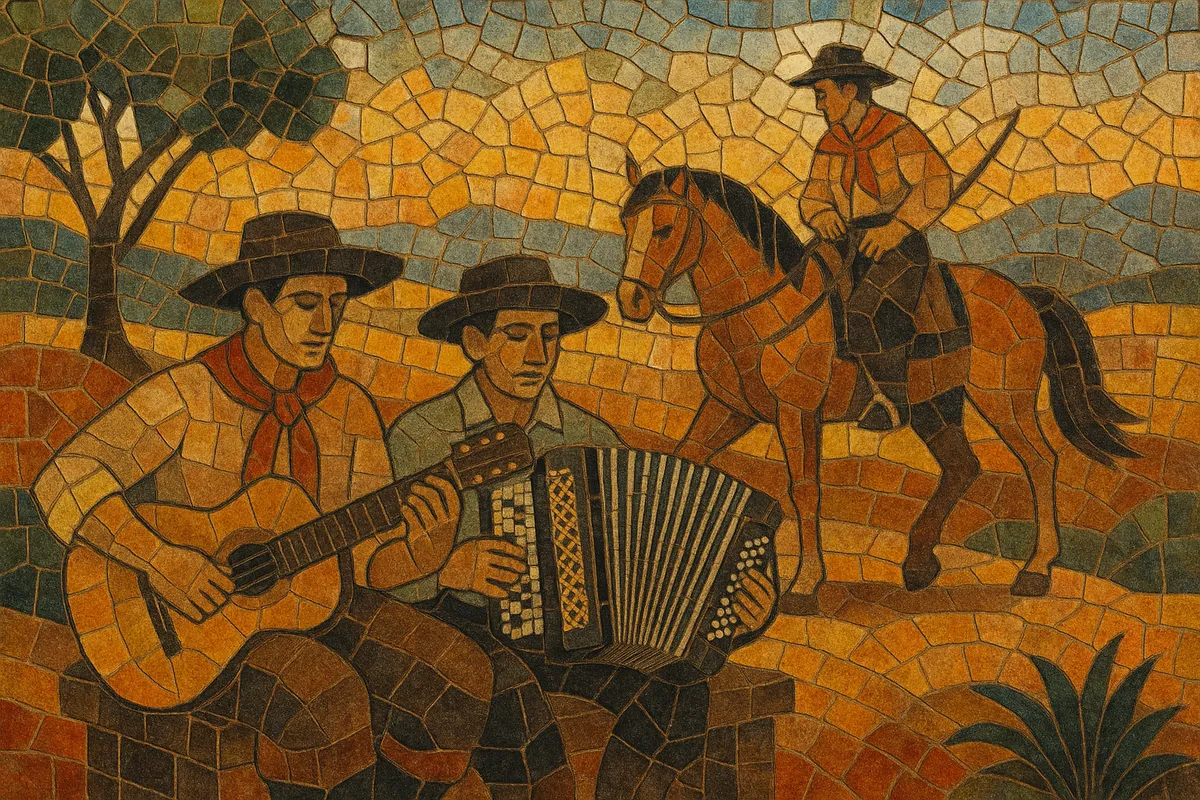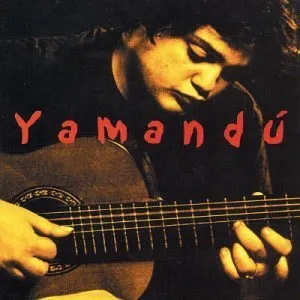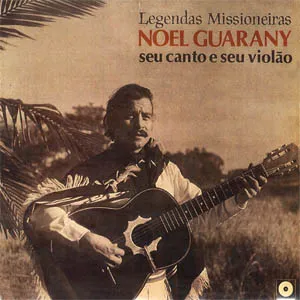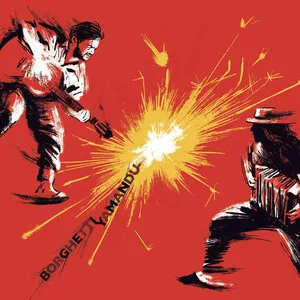Southern Brazilian music is an umbrella for the folk and dance traditions from Brazil’s southern states (Rio Grande do Sul, Santa Catarina, and Paraná), especially the gaúcho/nativista repertoire found in bailes and CTGs (Centros de Tradições Gaúchas).
It blends borderland idioms such as milonga, chamamé, vaneira/vanerão, xote, rancheira, bugio, and chamarrita with European immigrant dances (polka, schottische) and the Hispanic-Rioplatense lineage (tango/milonga, payada), typically led by accordion (gaita-ponto) and guitar.
Characterized by strong dance grooves in 2/4, catchy accordion melodies, and lyrics celebrating the pampas, horse culture, and everyday rural life, it ranges from reflective ballads (milonga) to energetic dance numbers (vanerão and vaneira) performed by conjuntos de baile and festival acts.
Southern Brazilian music coalesced where Brazilian, Uruguayan, and Argentine traditions meet. Rural gaúcho song practices (often linked to the payada tradition) absorbed Iberian guitar song, Portuguese/Azorean dances (chamarrita), and immigrant polkas and schottisches, while border contact brought milonga, chamamé, and tango/habanera syncopations.
With radio and regional labels, conjuntos de baile and accordion-led groups standardized local dance rhythms (xote, rancheira, vaneira/vanerão, bugio). Stars such as Teixeirinha popularized a modern, song-oriented format that traveled beyond the southern states, while community bailes and CTGs established a durable performance circuit.
Song festivals (notably the Califórnia da Canção Nativa, founded in 1971) professionalized songwriting, expanded the repertoire, and reinforced a gaúcho identity in lyrics and staging. Arrangements diversified (fiddle, bass, drum kit alongside gaita-ponto and guitars), and groups like Os Monarcas and Os Serranos helped canonize danceable substyles.
The style remains vibrant in bailes, rodeos, and CTGs, while artists record for national and digital audiences. Some acts pursue acoustic, rootsy aesthetics; others favor fuller band set‑ups suited to large dance halls. Cross-border collaborations with Argentine and Uruguayan folklorists continue, sustaining the borderland character of the genre.








